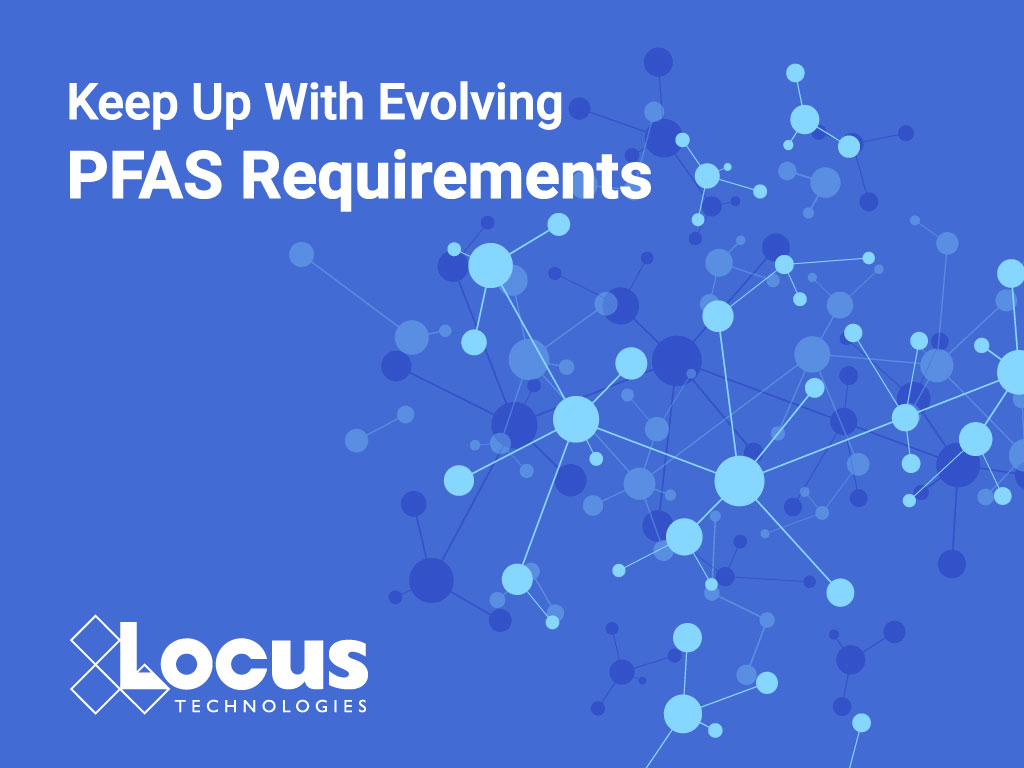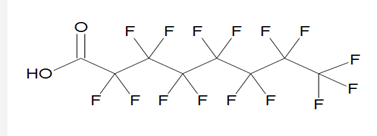Keep up with evolving PFAS requirements

Perfluorooctane sulfonate (PFOS) and Perfluorooctanoic acid (PFOA) are part of a group of synthetic chemicals known as perfluoroalkyl and polyfluoroalkyl substances (PFAS) that are characterized by a structure made of a carbon backbone of varying lengths, perfluoroalkyl chains, and functional groups that can create ionic and nonionic forms.

Figure 1 Eight (8) Carbon Backbone
The combinations of these chemical, structural parts have resulted in nearly 15,000 unique synthetics. Understanding the chemistry of PFAS is crucial for assessing their environmental fate, transport, and potential risk to human health and ecosystems.
In January 2024, the Environmental Protection Agency (EPA) finalized a rule to prevent companies from starting or resuming the manufacture or processing of 329 PFAS synthetic chemicals. This rule also added seven PFAS to the list of chemicals covered by the Toxics Release Inventory (TRI). On February 8, 2024, the EPA published a notice in the Federal Register proposing to add nine, specific, per-and polyfluoroalkyl substances (PFAS), their salts, and their structural isomers, to its list of hazardous constituents under Resource Conservation and Recovery Act (RCRA). In April 2024, EPA finalized the National Primary Drinking Water Regulation (NPDWR) for six PFAS. This month, the EPA added two PFAS chemicals as Hazardous Substances under the Comprehensive Environmental Response, Compensation, and Liability Act (CERCLA, the Superfund Law). In the final rule, new requirements were released pertaining to real-estate transactions for federal facilities, such that they must provide notice about the storage, release, or disposal of PFOA or PFOS on the property and guarantee that contamination has been, or will be, cleaned up. The EPA’s new rule will also drive the Department of Transportation to list and regulate these substances as hazardous materials under the Hazardous Materials Transportation Act.
As the regulatory landscape and risk assessments evolve, the accounting for different chemicals in this class of compounds will become more complex. A robust, scalable PFAS management system will allow for aggregation of supply chain data, remediation data, NPDWR, RCRA, DOT and CERCLA data to assess the full scope of PFOS/PFAS within your site’s boundaries and areas of influence.
Locus Technologies has the most extensive, pre-built, library for the management of the multitude of PFAS in all matrices, in all units, and for any regulatory compliance, research, remediation and/or feasibility requirements. In addition to compliance tracking, our on-cloud environmental data management includes automated data validation and sophisticated reporting tools.



